

Teatro del Pavone (1765-73)

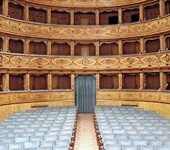
The first theatre here, the Teatrino del Leon d’ Oro, was built 1717-23, to a design by Alessandro Baglioni, but it proved to be too small. In 1765, the Accademici del Casino commissioned Pietro Carattoli to design a more imposing structure, as part of Palazzo Graziano Monaldi (1765). This new theatre, which was called the Teatro del Pavone (Peacock Theatre) and completed in 1773, was the first brick-built theatre in Perugia. It was also known as the Casino dei Nobili because it catered for the noble families of Perugia (unlike Teatro del Verzaro, later Teatro Morlacchi, below), which catered for the middle classes. The interior of Teatro del Pavone was re-modelled in 1943 and restored in 2007.
There is more detail on the website of Teatro Pavone.
Teatro Morlacchi (1780; remodelled in 1870-4)
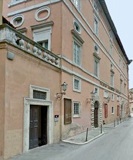
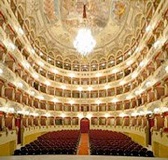
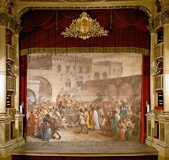
The theatre here, which was originally called Teatro del Verzaro, was built on the site of an ancient nunnery. It was intended for a middle class audience, unlike the Teatro Pavone (above), which catered for nobles. It was named for the Perugia composer, Francesco Morlacchi: his opera “Le Danaidi” was performed here in 1816, six years after its premier in Rome. The theatre was renamed in his honour after it was remodelled in 1874 by Guglielmo Calderini.
The painting (ca. 1874) on the fire curtain, which depicts the victorious Biordo Michelotti in Perugia in 1398, is by Mariano Piervittori. He also executed many of the frescoes in the theatre.
Teatro Turreno (1891)
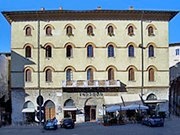
This theatre in Piazza Danti was built on what had been orchards belonging to the Oddi family and was later used as the grain market. The Commune designated the area for use as a theatre, and Ulisse Rocchi, the mayor of Perugia, commissioned the design from Alessandro Arienti.
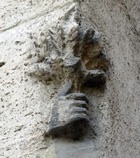
The structure was built largely of iron and other fire-proof materials. The discovery of a number of wells under the building led to difficulties in construction. The theatre was intended from its inception to be used by the working class.
The theatre was restored in 1926 and again in 1954, after which it could hold an audience of some 2,000 people. Following these interventions, little of the original structure survives.
The ground floor of the theatre was used for other commercial purposes. Caffè Turreno to the right is a long-standing feature of the piazza. An Etruscan well can be be viewed through a glass panel in the floor.
Sadly, both Teatro Turreno and Caffè Turreno have recently closed.
Return to Monuments of Perugia.
Return to: Walk I (Teatro Turreno and Teatro del Pavone); or
Walk II (Teatro Morlacchi).

